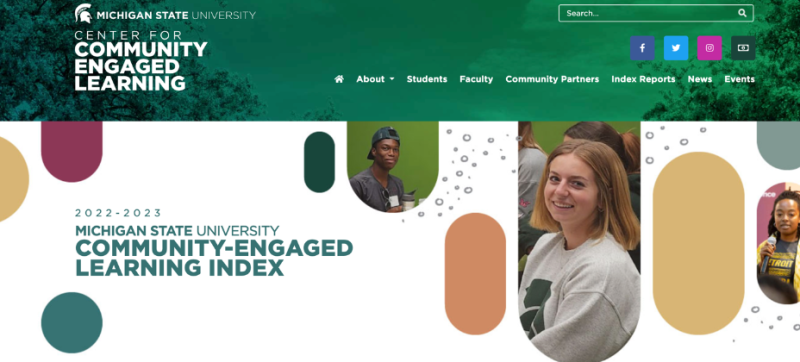Compact24: Program Assessment and Impact through “the Index”
By: Lina Reznicek-Parrado

While I only had the chance to attend one session during this year’s Compact24 Conference, I was particularly drawn to the question of program assessment. In other words, how are other community-engaged scholars across the country collecting data and assessing programming to generate systematic ways of doing the work? How are current programs assessed at the university level to generate buy-in from administrators, funders, etc.?
One session that addressed just that issue was a presentation by leaders from the Center for Community Engaged Learning at Michigan State. There, I was introduced to the idea of an “Index Report” or a “Community-Engaged Learning Index”—a multi-year program report highlighting many pieces of data about how CE Teaching and Learning plays out at that institution. The presenters shared methodologies for this report, including issues around the importance of defining the work, noticing that many folks on that campus still don’t think of their work as “community-engaged”, but that it can be.
“The index”, as the report is referred to, includes academic demographics from all students involved in community-engaged work, as well as an effort to “lift stories up”—as the presenters mentioned—to create a document that can be used when talking to funders and administrators, for example. It also includes data from community partners, and the lates report includes over 10 years of CE work at that institution.
When browsing through “the index” (accessible here), four sections are highlighted: Academic Community-Engaged Learning, Beyond-the-Classroom Community-Engaged Learning, Center for Community Engaged Learning Highlights and College and Program Features. It is fascinating to see that many of these sections include not specific programs, but aspects of the work that are relevant. For example, the first section includes a piece on “network building”, highlighting the faculty communities engaging with the work, student reflection workshops, student registrations and several notable learning outcomes. Other sections include campus-wide events related to community engaged teaching that may or may not have been tied to a particular course or program. In other words, the report seems to really “spread out” the category of what counts as community engaged work, really amplifying the benefits of CE work at a large scale. One last section of the index included specific programs, and a table of contents where readers can browse and read about a variety of concrete courses and programs.
In all, while it was fascinating to see how CE work plays out in a different institution, the mere experience of being at Compact24 for the very first time, helped me engage with the fact that this work is relevant and is prioritized in many institutions, in ways I was unaware of. It provided an outlet for me to continue engaging, growing and thinking of new paths in community-engaged work at The University of Denver.